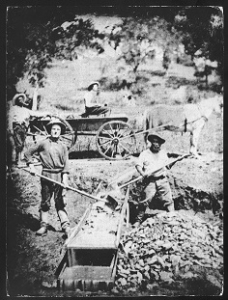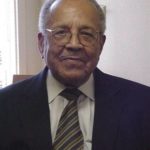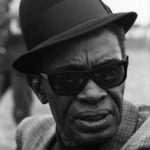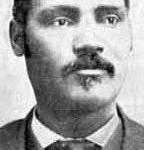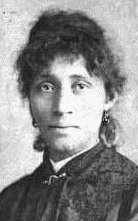How One Amateur Historian Brought Us the Stories of African-Americans Who Knew Abraham Lincoln
Once John E. Washington started to dig, he found an incredible wealth of untapped knowledge about the 16th president
Photo: Abraham Lincoln entering Richmond, Va., Apr. 3, 1865
(Smithsonian.com) The memoir of Elizabeth Keckly, a formerly enslaved woman who became a dressmaker to First Lady Mary Todd Lincoln, struck a nerve when it was published in 1868. Behind the Scenes, or, Thirty Years a Slave, and Four Years in the White House was an unprecedented look at the Lincolns’ lives in the White House, but reviewers widely condemned its author for divulging personal aspects of their story, particularly the fragile emotional state of Mary Lincoln after her husband’s murder.
For decades after its publication, the book was difficult to find, and Keckly lived in relative obscurity. In black Washington, however, many African-Americans personally knew and admired her, and she remained a beloved figure.
When journalist and Democratic political operative David Rankin Barbee claimed in 1935 that Keckly had not written the book and, remarkably, had never existed, one determined Washingtonian, an African-American high school teacher named John E. Washington, felt compelled to speak up. The encounter with Barbee about Keckly and Behind the Scenes changed Washington’s life and led him to write a remarkable book of his own—They Knew Lincoln.
Part memoir, part history, part argument for the historical significance of common people, They Knew Lincoln was the first book to focus exclusively on Lincoln’s relationship to African-Americans. They Knew Lincoln not only affirmed the existence of Keckly, but revealed that African-Americans, from the obscure folk preacher known as Uncle Ben to the much more prominent Keckly, had shaped Lincoln’s life, and it insisted that their stories were worth knowing. (more)
How U.S. Westward Expansion Breathed New Life into Slavery
(History.com) Like most people uprooted by the Cherokee Trail of Tears, Eliza Whitmire experienced terrible trauma.
In 1830, the U.S. government passed the Indian Removal Act. Eliza was about five years old when more than 3,000 armed militia arrived in Cherokee country in 1838. The militia companies forced her, her family and her community to march more than 1,000 miles west—through Northern Georgia, across the Mississippi and Ohio Rivers, to present-day Oklahoma.
Her mother described “the bitter memory” of “women and children…driven from their homes, sometimes with blows.” The sick, young and elderly sometimes rode in wagons, but the majority of the tens of thousands being displaced traversed the rugged territory on foot. Along the way, starvation posed a constant threat. It was a “time filled with horror and suffering for the unfortunate Cherokee and their slaves,” Eliza later recalled.
She and her family were among those slaves. Their removal story differs slightly from traditional “Trail of Tears” narratives because they were of African descent, enslaved and forcibly removed along with their Cherokee owners.
Eliza Whitmire’s story highlights the underreported complexities of slavery and the American frontier. Few historical narratives, for example, tell the story of a Georgia plantation owned and operated by Cherokee enslavers. And few chronicles of the frontier account for its human diversity. Often depicted as territory “discovered” and “tamed” by heroic white men, the frontier was, in many ways, America’s first melting pot. It was a place where indigenous people, and those of European, African and Mexican descent came into contact and tried to sort out their roles. And it was, for many who came there, a place shaped more by slavery than by freedom or opportunity. (more)
Rotating exhibit at East Waco Library showcases Waco’s black history
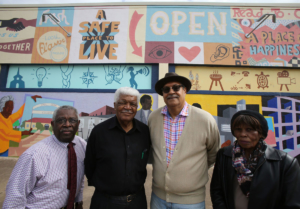
Members of the Central Texas African-American Heritage Foundation gather outside the East Waco Library, which houses a new black history exhibit. From left to right are Lorea Johnson, Van Allen, Don Wright and Gigi Green-Bowie. Staff photo, Jerry Larson
(Waco Tribune-Herald) A corner of the East Waco Library might seem a small space to tell the big story of African-Americans in Waco.
Black Wacoans have helped build the city and its economy for 170 years. They have founded schools and businesses and earned glory in politics, sports, music and warfare.
But backers of the new rotating exhibit at the East Waco Library at 901 Elm Ave. hope to tell those stories in coming years a little at a time.
“We’re not opposed to starting small at all,” said Don Wright, chairman of the Central Texas African American Heritage Foundation, which worked with library officials to start the display. “Sometimes a grassroots effort like that is what ultimately pays off.” (more)
TIPHC Bookshelf
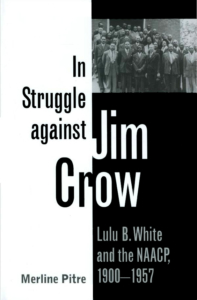 Published scholarship on black history in Texas is growing and we’d like to share with you some suggested readings, both current and past, from some of the preeminent history scholars in Texas and beyond. We invite you to take a look at our bookshelf page – including a featured selection – and check back as the list grows. A different selection will be featured each week. We welcome suggestions and reviews. This week, we offer, “In Struggle against Jim Crow, Lulu B. White and the NAACP, 1900-1957,” by Merline Pitre.
Published scholarship on black history in Texas is growing and we’d like to share with you some suggested readings, both current and past, from some of the preeminent history scholars in Texas and beyond. We invite you to take a look at our bookshelf page – including a featured selection – and check back as the list grows. A different selection will be featured each week. We welcome suggestions and reviews. This week, we offer, “In Struggle against Jim Crow, Lulu B. White and the NAACP, 1900-1957,” by Merline Pitre.
African American women have played significant roles in the ongoing struggle for freedom and equality, but relatively little is known about many of these leaders and activists.
Most accounts of the civil rights movement focus on male leaders and the organizations they led, leaving a dearth of information about the countless black women who were the backbone of the struggle in local communities across the country. At the local level, women helped mold and shape the direction the movement would take. Lulu B. White was one of those women in the civil rights movement in Texas.
Executive secretary of the Houston branch of the NAACP and state director of branches, White was a significant force in the struggle against Jim Crow during the 1940s and 1950s. She was at the helm of the Houston chapter when the Supreme Court struck down the white primary in Smith v. Allbright, and she led the fight to get more blacks elected to public office, to gain economic parity for African Americans, and to integrate the University of Texas.
Author Merline Pitre places White in her proper perspective in Texas, Southern, African American, women’s, and general American history; points to White’s successes and achievements, as well as the problems and conflicts she faced in efforts to eradicate segregation; and looks at the strategies and techniques White used in her leadership roles.
Pitre effectively places White within the context of twentieth-century Houston and the civil rights movement that was gripping the state. In Struggle Against Jim Crow is pertinent to the understanding of race, gender, interest group politics, and social reform during this turbulent era.
Mar 11
Prairie View A&M University opened its doors on this date in 1878 with an enrollment of eight students, all men, for the first state-supported college in Texas for African Americans. The school, located 50 miles northwest of Houston, had its beginnings in the Texas Constitution of 1876, which, in separate articles, established an “Agricultural and Mechanical College” and pledged that “Separate schools shall be provided for the white and colored children, and impartial provisions shall be made for both.” Thus, Alta Vista Agricultural and Mechanical College of Texas for Colored Youth was established on August 14, 1876. Prairie View, a land-grant university authorized under the Morrill Acts of 1862 and 1890, is part of the Texas A&M System.
Mar 15
Bluesman Sam “Lightnin” Hopkins was born on this day in 1912 in Centerville. At age eight he made his first instrument, a cigar-box guitar with chicken-wire strings. By ten he was playing music with his cousin, Texas Alexander, and Blind Lemon Jefferson, who encouraged him to continue. His 60-year career began in the 1920s and he recorded for almost 20 different record companies, played at Carnegie Hall with Pete Seger and Joan Baez and toured with the American Folk Blues Festival. Hopkins also played before Queen Elizabeth in a command performance. Some of his biggest hits included “Short Haired Women / Big Mama Jump!” (1947); “Shotgun Blues,” which went to Number 5 on the Billboard charts in 1950; and “Penitentiary Blues” (1959). Hopkins recorded a total of more than eighty-five albums.
Mar 15
Richard Henry Boyd was born on this date in 1843. Boyd was a preacher, missionary, entrepreneur, publisher, banker, educator, writer, and Black Nationalist who was born a slave in Noxubee County, Mississippi. Though his slave master christened him Dick Gray, he changed his name to Richard Henry Boyd after the Civil War. He served as a Texas Confederate body servant near the Battle of Chattanooga during the war. In 1869, Richard Boyd became a Baptist minister and in 1872 helped organize the Negro Baptist Convention of Texas. During the 1880s, he attended Bishop College strongly believing in the ideals of Black initiative and self-help for the former slaves.
Mar 16
Lucy Parsons, socialist and anarchist, was born this day in 1853 in Texas, though accounts differ as to her exact birthplace. Parsons had African American, Native American, and Mexican ancestry. She was a prominent feminist and early civil rights pioneer whose commitment to class struggle brought her to the front lines of the 1886 movement for the eight-hour workday. Parsons led mass hunger demonstrations of homeless and unemployed people in San Francisco and Chicago and was a powerful orator and activist. Considered a dangerous, explosive and robust threat to authorities, the Chicago police labeled Parsons “more dangerous than a thousand rioters.”
Blog: Ron Goodwin, Ph.D., author, PVAMU history professor
Ron Goodwin is an assistant professor of history at Prairie View A&M University. Even though he was a military “brat,” he still considers San Antonio home. Like his father and brother, Ron joined the U.S. Air Force and while enlisted received his undergraduate degree from Texas Lutheran University in Seguin, Texas. After his honorable discharge, he completed graduate degrees from Texas Southern University. Goodwin’s book, Blacks in Houston, is a pictorial history of Houston’s black community. His most recent book, Remembering the Days of Sorrow, examines the institution of slavery in Texas from the perspective of the New Deal’s Slave Narratives.
Recent Posts
Wakanda Forever — Part 1
Ok, let’s begin by acknowledging that Wakanda is a fictional country in Africa. In the Marvel comics universe, it’s home to the superhero Black Panther. But there is still something about it that has recently struck a nerve in the black community. The Black Panther movie debuted in February to positive reviews and by February 25, earned more than $403 million in the US and Canada and $709 million worldwide. Wow. I must admit I’m
Not much has changed
“These are guys with the name D-Money, Smoothie, Shifty – these types of guys – they come from Connecticut and New York, they come up here, they sell their heroin, they go back home,” (Governor Paul) LePage told a large crowd. “Incidentally, half the time they impregnate a young white girl before they leave, which is a real sad thing because then we have another issue we have to deal with down the road.” January
Submissions wanted
Historians, scholars, students, lend us your…writings. Help us produce the most comprehensive documentation ever undertaken for the African American experience in Texas. We encourage you to contribute items about people, places, events, issues, politics/legislation, sports, entertainment, religion, etc., as general entries or essays. Our documentation is wide-ranging and diverse, and you may research and write about the subject of your interest or, to start, please consult our list of suggested biographical entries and see submission guidelines. However, all topics must be approved by TIPHC editors before beginning your research/writing.
We welcome your questions or comments. Please contact Mr. Michael Hurd, Director of TIPHC, at mdhurd@pvamu.edu.

